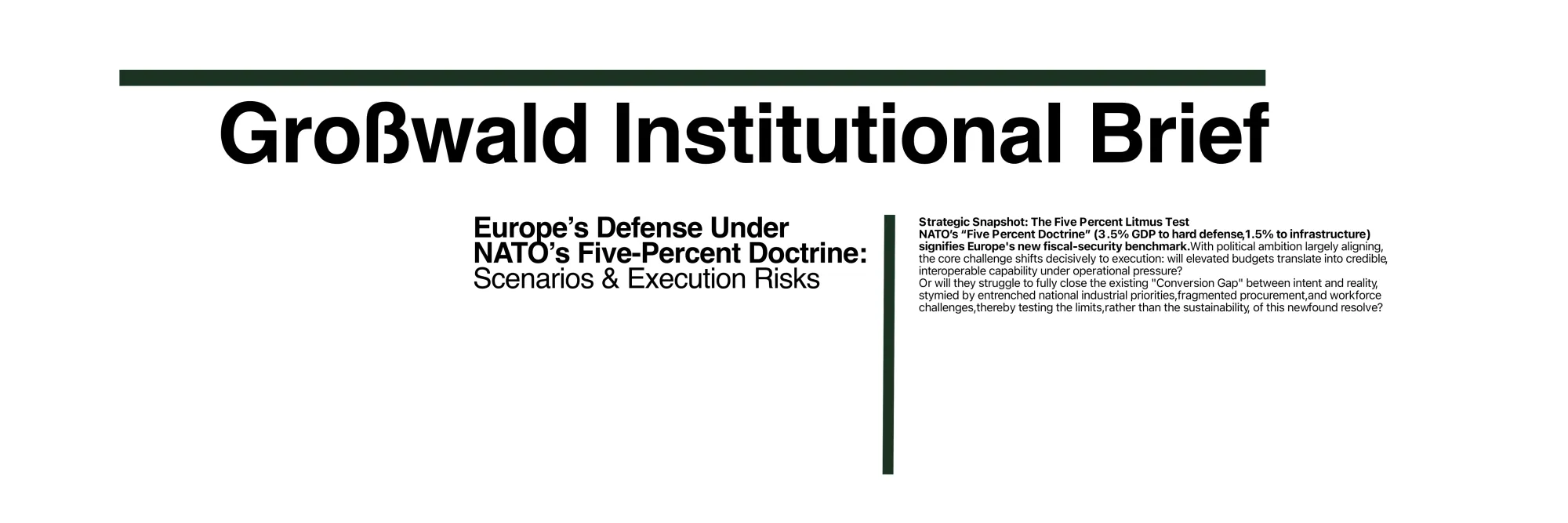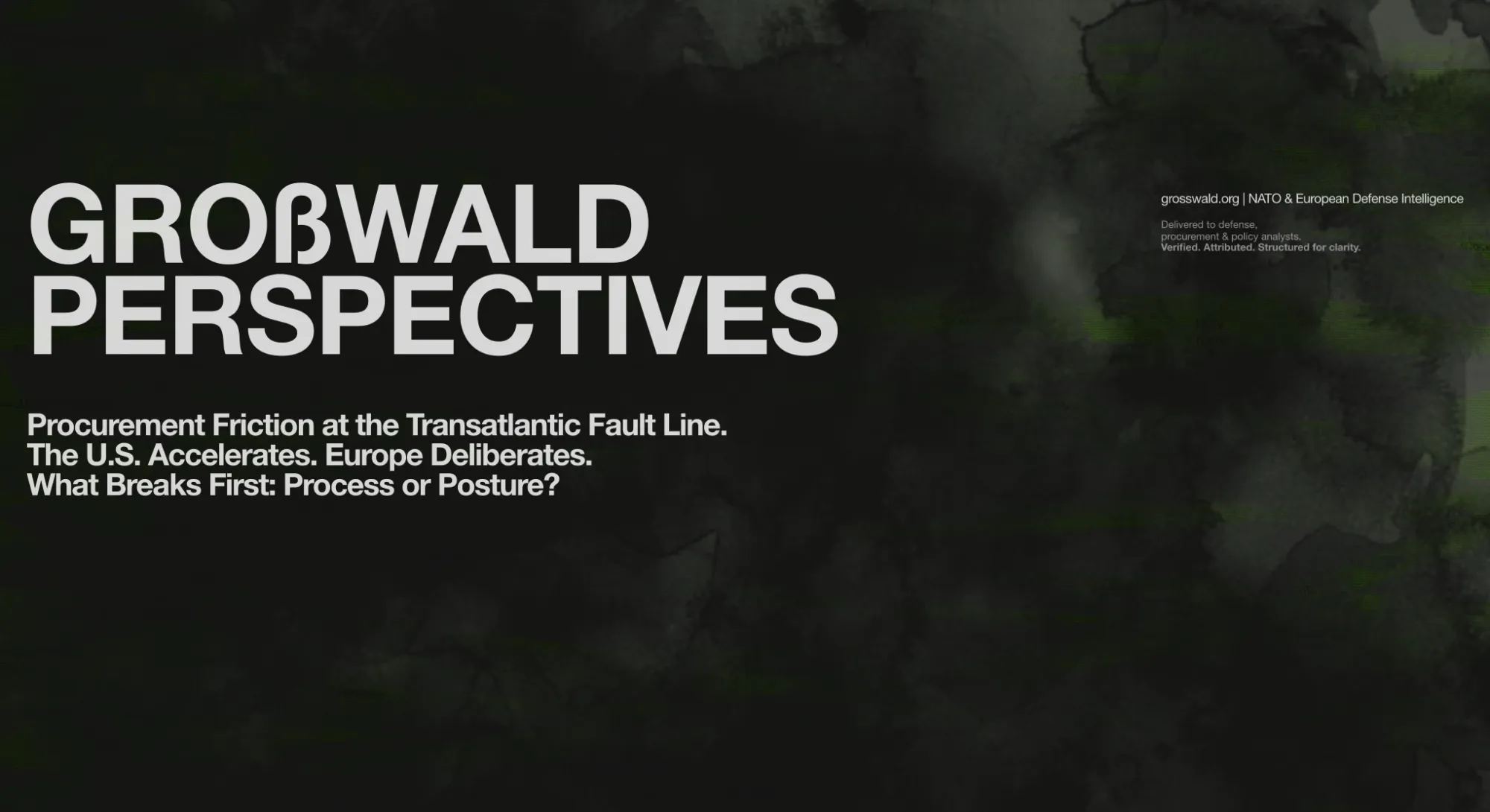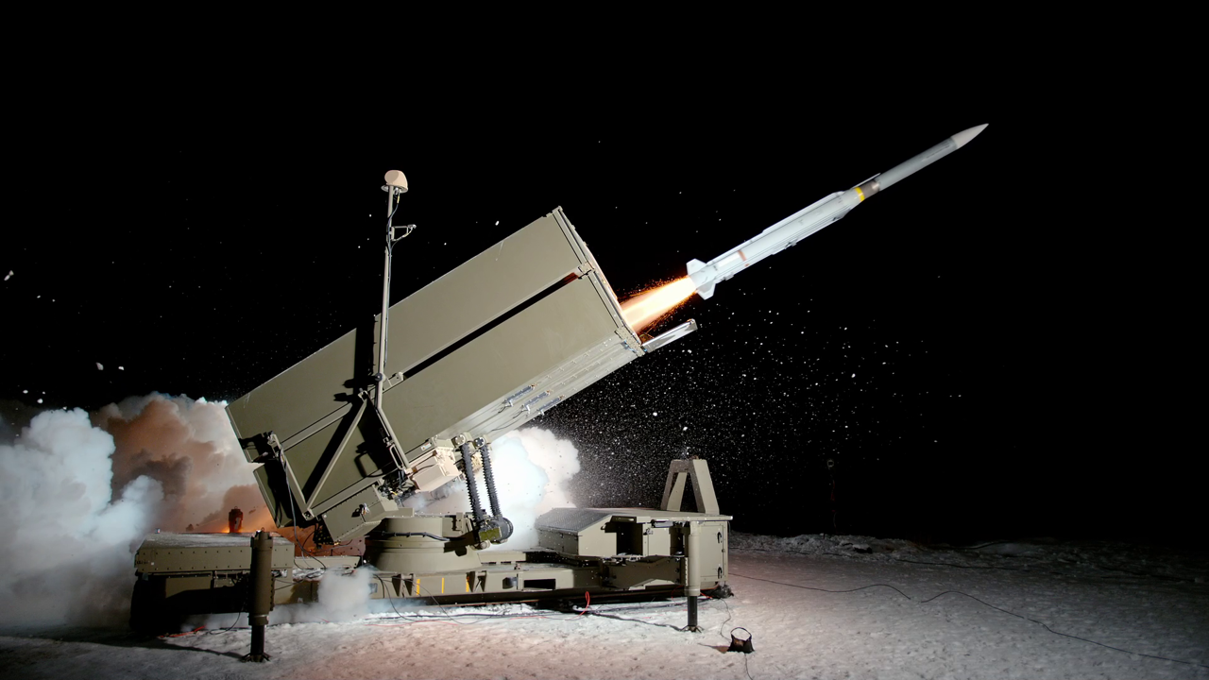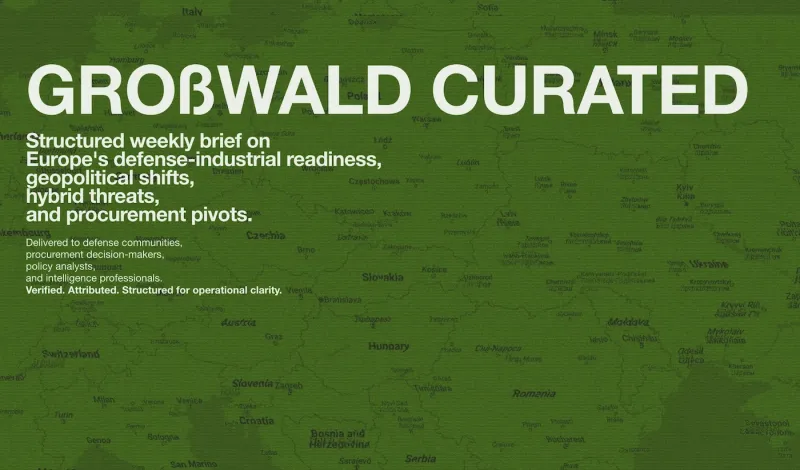Großwald Curated | No. 25 — Europe Bypassed, Iran IAMD Exposed, Russia Fortifies North, Oreshnik Locked for 2025
16 – 22 June 2025 | NATO & European Defence — Weekly briefing curated for policy, intelligence & defence communities across NATO / EU

In No. 24, we tracked Europe’s race to fuse cash, cadres, and civil resilience. This week, that race was thrown into stark relief by three parallel crises.
The first was overt: U.S. airstrikes on Iran’s nuclear facilities, which dominated global headlines.
The Iran strikes weren’t Europe’s war, but they exposed Europe’s irrelevance. Washington bypassed Berlin and Paris. Trump publicly rejected European mediation. Merz learned of the operation after it started. EU diplomacy failed in real time.
The second was structural: a high-stakes, behind-the-scenes scramble by European capitals to solidify their positions ahead of the NATO summit in The Hague.
The Hague summit will impose the 5% doctrine. It is framed as the entry ticket for U.S. security guarantees. Germany moved first: 11,000 new troops funded, a new “growth department” at the MoD, and a leaked doctrine naming Russia an “existential risk.” That triggers a whole-of-society defense model. Conscription is now a political inevitability.
The third came from beyond the Eastern Flank: Belarus confirmed the Oreshnik hypersonic system will deploy by end-2025. Russia’s new military base near Finland alters northern posture. These are - in comparison - facts, not forecasts or intentions.
The EU’s defense industry is bifurcating. Rheinmetall–Anduril’s missile pact shows agility. FCAS remains stuck. Brussels advanced EDIP, but legal barriers loom. Russia and Belarus deploy. Europe debates.
And in parallel, a U.S.-brokered prisoner deal in Minsk exposed a new, transactional diplomacy that bypasses Brussels entirely. A fourth vector may be emerging: default diplomacy without Europe at the table.
This is a curated dispatch from the front lines of Europe’s defense pivot.
Executive Snapshot — Why this week matters
- NATO’s 5% Doctrine Hardens: With The Hague summit imminent, Trump’s 5% GDP security spending target (3.5% military / 1.5% resilience) is the central point of contention. Germany signals conditional support, Norway offers backing, while Spain, France, Italy, and Canada voice resistance, setting the stage for a fractious meeting.
- Bundeswehr Gets Personnel Surge & New Doctrine: German Finance Minister Klingbeil approved funding for 11,000 new Bundeswehr posts for 2025. A leaked military strategy paper now classifies Russia as an “existential risk” driving a whole-of-society defense posture. To manage the expansion, the MoD will be restructured with a new “growth department.”
- Conscription Debate Reaches Boiling Point: The German Chancellery is pushing for a swift decision on reinstating mandatory military service to meet new force goals. The SPD is advocating for an “attractiveness offensive” as a first step. A YouGov poll shows 54% of Germans now favor the draft.
- Iran Strikes Expose Transatlantic Rifts: Chancellor Merz was informed of U.S. strikes on Iran after they began. President Trump publicly rebuffed European mediation efforts, telling press: “The Iranians want to talk to us, not Europe.” The fallout has caused deep political infighting in Berlin.
- Belarus to Host Oreshnik Missiles; Russia Builds Up Near Finland: Minsk confirmed the nuclear-capable Oreshnik ballistic missile system will be deployed by end-2025. Separately, Russia has constructed a new military base near the Finnish border, enhancing its Northern posture. And Minsk is reportedly stocking up on gas masks for the public.
- Defense Industry Realigns; EU Pushes Integration: German giant Rheinmetall formed a strategic partnership with U.S. disruptor Anduril Industries to co-develop missiles. Meanwhile, the EU advanced its European Defence Industrial Programme (EDIP), though ambitious funding plans face scrutiny.
This Week’s Structure
1 | Transatlantic Stress-Test — The Hague’s 5% Ultimatum, Alliance Fractures, U.S. Rebuffs Europe
2 | German Defence Debate — Personnel Surge, Conscription Flashpoint, Existential Risk Doctrine
3 | Diplomatic Fallout — The Iran Distraction & Intra-Alliance Friction
3a | Curated Special: Doctrinal Watch — The Iran Conflict & The European IAMD Ledger
4 | Industrial & Tech Pulse — Rheinmetall–Anduril Pact, FCAS Rivalries, EU Industrial Efforts
5 | Eastern Signals — Oreshnik Deployment, Belarusian Gas Masks, Russia Military Base near Finland
6 | Strategic Outlook — Next 14 Days

1 | Transatlantic Stress-Test — The Hague’s 5% Ultimatum
As NATO leaders prepare for a tense, shortened summit in The Hague, the alliance is coalescing around a single, divisive issue: President Trump’s demand that all members commit to spending 5% of GDP on security. The proposed formula—3.5% on hard military capabilities and 1.5% on state resilience—is being framed by Washington as the new price of the U.S. security guarantee.
The pressure is palpable. NATO Deputy Commander of Transformation, Gen. Christian Badia, stated the alliance needs a "30 percent increase in military capabilities," which directly implies a 3.5% spending target [Welt am Sonntag]. German government sources revealed a core objective for The Hague is to “keep the Americans in Europe as long as possible,” admitting a U.S. withdrawal would require “at least ten years” for Europe to compensate [Welt am Sonntag]. Ex-minister Karl-Theodor zu Guttenberg warned it would be “idiotic not to deal with the fact that NATO could suddenly appear very weakened” [Tagesanbruch Podcast].
While the German government under Merz has signaled conditional support for the 5% goal, resistance is mounting from several quarters. Spain’s Prime Minister has called the target “unreasonable,” and finance ministers from France, Italy, the UK, and Canada have privately indicated they cannot meet it [Bild]. However, the 5% doctrine did receive a boost from Oslo, with Norway signaling its support for the target, adding another dimension to the alliance's internal debate. The summit has reportedly been shortened to just 2.5 hours, a move seen as an attempt by SG Rutte to manage Trump and secure a brief, symbolic communiqué on Article 5.
Signal ▶ The 5% doctrine has moved from threat to policy. The Hague will not be about celebrating 2% but about managing a fundamental fracture over the future cost and commitment of transatlantic security.
2 | German Defence Debate — The Conscription Clock & A Doctrine of “Existential Risk”
Germany’s Zeitenwende entered a new phase this week, moving from funding to force structure. Finance Minister Lars Klingbeil (SPD) approved a request from the Defense Ministry for 10,000 new soldiers and 1,000 civilian staff in 2025, a notable exception to government-wide austerity [Bild am Sonntag]. This is the first concrete step toward meeting NATO’s demand for an additional 50-60k German troops.
Driving the urgency is a stark doctrinal shift. A confidential Bundeswehr strategy paper, leaked to Der Spiegel, now classifies Russia as an “existential risk” and warns Moscow is aligning its entire state and economy for a major conflict with NATO.
This has forced the highly-charged conscription debate to a head. Head of Chancellery Thorsten Frei (CDU) urged the SPD to agree swiftly on a return to the draft, saying, “We don’t have time to wait indefinitely” [dpa]. The SPD’s defense spokesman, Falko Droßmann, countered that an "attractiveness offensive"—higher pay, modern barracks, better service models—must come first [Tagesspiegel]. A YouGov poll shows public support is solidifying, with 54% of Germans in favour of reinstating mandatory service [dpa]. To manage the force growth, Defense Minister Pistorius is reportedly overhauling the ministry, creating a new "growth department" and reassigning innovation responsibilities to a new State Secretary for Armaments, Jens Plötner [Bild am Sonntag].
Signal ▶ Berlin is building the institutional and human-resource scaffolding for a larger, more capable military. The political battle is no longer if the Bundeswehr will grow, but how—by choice or by compulsion.
3 | Diplomatic Fallout — The Iran Distraction & Intra-Alliance Friction
The U.S. strikes on Iran served primarily as a political stress-test for Europe, and the results were poor. Chancellor Merz was informed only after the operation was underway, a significant lapse in allied coordination [Der Spiegel]. Subsequent European diplomatic efforts were publicly dismissed by President Trump, who stated, “Europe will not be able to help” [Bild]. This blunt rejection of the E3 (Germany, France, UK) came just as they concluded talks with Iran's chief diplomat in Geneva.
The crisis also ignited a political firestorm in Berlin. Merz’s comment that Israel was doing the “dirty work for all of us” was met with outrage from opposition parties and a lawsuit from public figures [dpa, Berliner Zeitung]. The statement reportedly created a rift with Foreign Minister Wadephul, whose cautious tone was seen by some in his own party as too aligned with the previous government [Bild]. The SPD’s Rolf Mützenich condemned the strikes as a risk for “further wars,” while the FDP’s Bijan Djir-Sarai supported them, highlighting the deep divisions within the German government [Tagesspiegel].
The German public’s perception of Israel has also shifted dramatically. An Allensbach poll found positive views of Israel have plummeted from 54% in 2022 to just 20% today, while negative views have surged to 57% [FAZ].
Signal ▶ The Iran crisis left Europe appearing marginalized on the world stage and deeply fractured at home. The episode underscores the difficulty of forging a coherent European foreign policy when faced with U.S. unilateralism and explosive domestic political sensitivities.
3a | Curated Special: Doctrinal Watch — The Iran Conflict & The European IAMD Ledger
The U.S. strikes on Iran, while strategically distant, put a spotlight on capabilities and vulnerabilities directly relevant to Europe’s own Integrated Air and Missile Defense (IAMD) architecture. Lacking detailed after-action reports, European planners are nonetheless modeling the engagement and asking critical questions based on known Iranian and Russian-origin systems:
- Layered Defense Under Fire: Iran’s defensive network—composed of Russian-origin S-300 and S-400 systems and domestic platforms like the Bavar-373—was reportedly degraded prior to the strikes by Israeli C2 suppression efforts. Even so, the systems achieved only partial intercept success against U.S. stand-off munitions, including stealth B-2-launched cruise missiles and possibly sea-based Tomahawks. C2 capabilities were reportedly degraded by Israeli cyber and kinetic actions. [defensefeeds.com, airandspaceforces.com, euro‑sd.com]
- European takeaway: NATO must close mid-altitude gaps by reinforcing its IAMD stack with THAAD-/Arrow-2-class interceptors and accelerating IRIS-T SLM integration for the 20–40 km layer.
- Drone Swarm Saturation: Iran’s retaliatory campaign, Operation True Promise III, launched waves of Shahed‑136 and Geran‑2 drones, explicitly designed to exhaust and saturate air defense radars and interceptors, mirroring Russian tactics in Ukraine - mirroring the attritional warfare seen in Ukraine and also employed by Iran's proxies in the Red Sea. [japcc.org, bulgarianmilitary.com, caliber.az]
- European takeaway: Expand C-RAM and C-UAS (e.g. Skynex, Ozelot) deployments near critical logistics and airbase infrastructure. Integrate swarm-detection logic into NATO’s upcoming “Combat Cloud.”
- Missile–Drone Convergence: Iran's doctrine has already fielded systems that merge missile and drone technology. The "358" loitering surface-to-air missile, for example, uses a rocket boost for launch followed by a turbojet-powered flight, allowing it to patrol a target zone to hunt for aircraft or drones. While not confirmed in this week's salvos, this capability demonstrates a doctrinal shift toward hybrid strike tools. [CSIS Missile Threat, The War Zone]
- European takeaway: Deep‑strike doctrine must evolve: pair long-range munitions (JSM/Taurus) with MQ‑9-class loitering drones for persistent interdiction.
- Electronic Warfare & Command Resilience: GPS jamming spiked across the Strait of Hormuz and Arabian Gulf (June 15–18), disrupting the navigation of over 1,000 ships daily. OSINT sources also reported broad-spectrum EW activity inside Iran, likely from EA-18G Growlers, targeting radar and comms nodes. [Reuters, spectrumlocalnews.com, gCaptain, Windward.ai]
- European takeaway: Prioritize dual-mode seekers (RF + IR) on all future missile buys. Harden NATO’s C2 through passive EO/IR and multistatic radar integration, ensuring resilience in GPS-denied environments.
Signal ▶ The Iran conflict is a real-world laboratory for high-intensity, cross-domain warfare. The operational takeaways—the vulnerability of even advanced air defenses to stealth and suppression, the proven threat of drone swarm saturation, and the paramount importance of EW resilience—are directly informing NATO’s next-generation defense posture.
4 | Industrial & Tech Pulse: Rheinmetall-Anduril Pact vs. FCAS Feud
Amid the geopolitical turmoil, the defense-industrial landscape saw significant movement. In a major strategic development, German defense giant Rheinmetall formed a partnership with U.S. tech firm Anduril Industries to co-develop and manufacture missiles and solid rocket engines in Europe [FAZ]. The deal, which brings together a traditional prime with a Silicon Valley disruptor backed by Peter Thiel, is a direct bid to build European sovereignty in autonomous systems and propulsion.
The collaborative spirit, however, was not universal. A public rift deepened between Airbus and Dassault Aviation over the Future Combat Air System (FCAS). Dassault CEO Eric Trappier insisted on his company’s lead role and threatened, “We could do it alone,” highlighting the persistent national rivalries that plague pan-European defense projects [dpa/AFX]. Earlier remarks see here.
At the Paris Air Show, industry leaders drove home the need for change. Airbus CEO Guillaume Faury urged Europe to procure more armaments locally and commit to long-term plans to replace U.S. systems [FAZ]. The focus is shifting to the software and networks that connect platforms, with Airbus and drone-maker Quantum Systems agreeing to link their respective "Combat Cloud" and "Mosaic" AI platforms [Handelsblatt].
Brussels also advanced efforts to bolster the European defense industrial base. EU member states sealed a deal on the European Defence Industrial Programme (EDIP), aiming to streamline joint procurement and promote 'buy-European' initiatives. This comes as the Commission pushes proposals to reduce red-tape and ease competition rules for defense firms. However, ambitious funding plans like the €150bn SAFE initiative (under ‘Readiness 2030’) face hurdles, with a German Bundestag report this week warning of potential EU treaty violations and questionable economic justification [Politico].
Signal ▶ A two-speed industrial base is emerging: agile, transatlantic partnerships are forming to tackle specific capability gaps (like missiles), while legacy mega-projects like FCAS remain bogged down by political and industrial infighting. Broader EU efforts to stimulate the defense sector show progress but also face significant fiscal and legal scrutiny.
5 | Eastern Signals: Belarus Deploys Oreshnik, Tests New Diplomatic Channels
The strategic environment on NATO’s eastern flank materially worsened this week.
The Secretary of Belarus' Security Council, Alexander Volfovich, confirmed that the nuclear-capable Oreshnik hypersonic missile system will be deployed in Belarus by the end of 2025 [Belsat]. The move places a new, high-speed strategic threat on NATO's doorstep, altering the defense calculus for the entire region. The announcement was paired with snap military mobilization exercises near the Polish border involving special operations forces [Belsat]. Alongside these military signals, reports from opposition organization BYPOL this week detailed extensive inspections of buildings and alleged panic-buying of gas masks in Belarus, raising questions about potential preparations for heightened civil defense readiness, though official confirmation remains absent.
In a parallel development, Minsk demonstrated a new form of transactional diplomacy. The release of 14 political prisoners, including prominent opposition figure Sergei Tikhanovsky, was explicitly framed by Lukashenka’s government as a direct response to a request from President Trump, delivered via U.S. special envoy Keith Kellogg during a high-level visit to Minsk [ARD, Reuters]. Foreign Minister Wadephul welcomed the release but stressed that many other prisoners remain.
Meanwhile, the EU is reportedly considering a full ban on transactions with the Belarusian banking system as part of its 18th sanctions package, a move that would dramatically escalate economic pressure on Minsk [Zerkalo.Io].
According to Odessa Journal Russia has constructed a significant new military base near the Finnish border (Karelia/Murmansk), reportedly housing S-400/S-500 systems, Kalibr missiles, and advanced EW capabilities. The development raises the strategic stakes for Finland, the Baltics, and NATO, signalling increased Russian force posture in the High North.
Signal ▶ The Union State is hardening its military posture with strategic weapons deployments while simultaneously testing new, transactional diplomatic channels with Washington that bypass Brussels. Concurrently, Russia’s build-up on the northern flank indicates a broader strategic pressure campaign against NATO’s eastern and northern frontiers. This dual-track approach aims to increase hard-power leverage while exploiting potential fractures in the Western alliance.
6 | Strategic Outlook: Next 14 Days
| Date | Event | Why It Matters |
|---|---|---|
| 24 – 26 Jun | NATO Summit, The Hague | The moment of truth for the 5% doctrine. The final communiqué—and Trump's rhetoric—will set the course for transatlantic security and European defense spending for years to come. |
| End Jun | U.S. Military Night Drills, Grafenwöhr | A powerful signal of continued U.S. military presence and operational readiness on German soil, even as the political relationship frays. |
| Early Jul | German Cabinet Paper on Conscription | Following the personnel approval, the government is expected to release its options paper on military service, defining the parameters for the contentious debate on a voluntary vs. compulsory model. |
| July 9 | U.S.-EU Tariff Deadline | President Trump’s executive order on retaliatory tariffs looms. The outcome of Economy Minister Reiche's visit to Washington will determine if a trade war can be averted. |
| Ongoing | EU 18th Sanctions Package Debate | Deliberations on a potential SWIFT-style cut-off for Belarusian banks will test EU unity and its willingness to deploy its most powerful economic weapons against the Lukashenka regime. |
| Sep 2025 | Zapad-25 Military Exercises | Planning for the major Russia-Belarus drills continues. The Oreshnik deployment and new Russian basing in the north will loom large, making these exercises a critical test of NATO’s updated posture and deterrence signals. |
Conclusion: Facing the Ledger
The noise from the Middle East was a powerful distraction, but it could not obscure the week's core truth: Europe is being forced to reckon with its own defense ledger. The 5% ultimatum from Washington is a bill coming due at The Hague. In response, Germany is moving beyond rhetoric to the hard, politically painful work of rebuilding its military mass and doctrine. The deployment of new strategic weapons in Belarus and Russia's bolstered posture in the north are stark reminders that the threat environment is not static.
While Europe’s leaders were sidelined in one crisis, they are now center stage in their own. The coming weeks will show whether the alliance can withstand the internal and external pressures, and whether the continent’s newfound urgency can be converted into credible, deployable deterrence before the strategic clock runs out.
— grosswald.org | All developments drawn from verified German and international outlets, dated 16–22 June 2025.
Related Großwald Reporting
- Großwald Curated | No. 24 — GPUs, the Draft & Drone-Ships: Europe’s AI Autobahn Meets the Belarus-China-Russia Grey Zone
- Großwald Curated | No. 23 — Merz in DC, Minsk–Kazan UAV Pact, Zapad-25, Lithuania’s Line Holds
- Großwald Curated | No. 22 — Drones on Russian Bombers, Odessa, German Tomahawks, 5% Lock-In
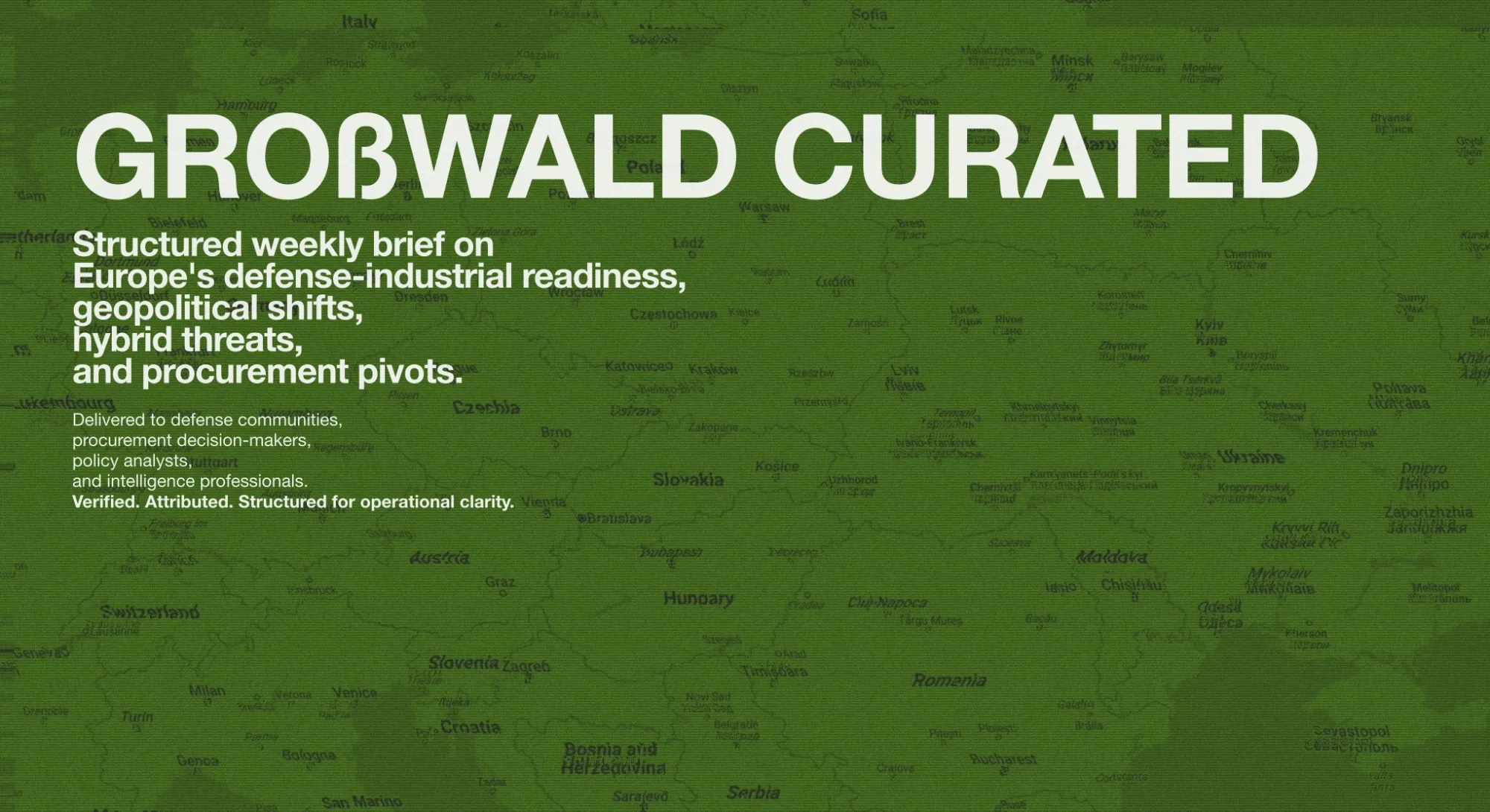
DEZ | 'ZEITENWENDE'
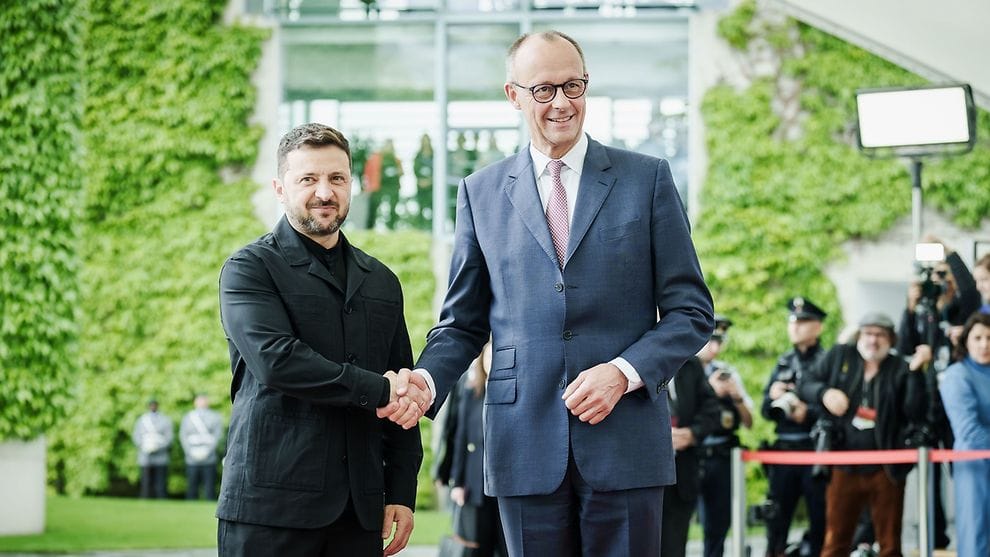
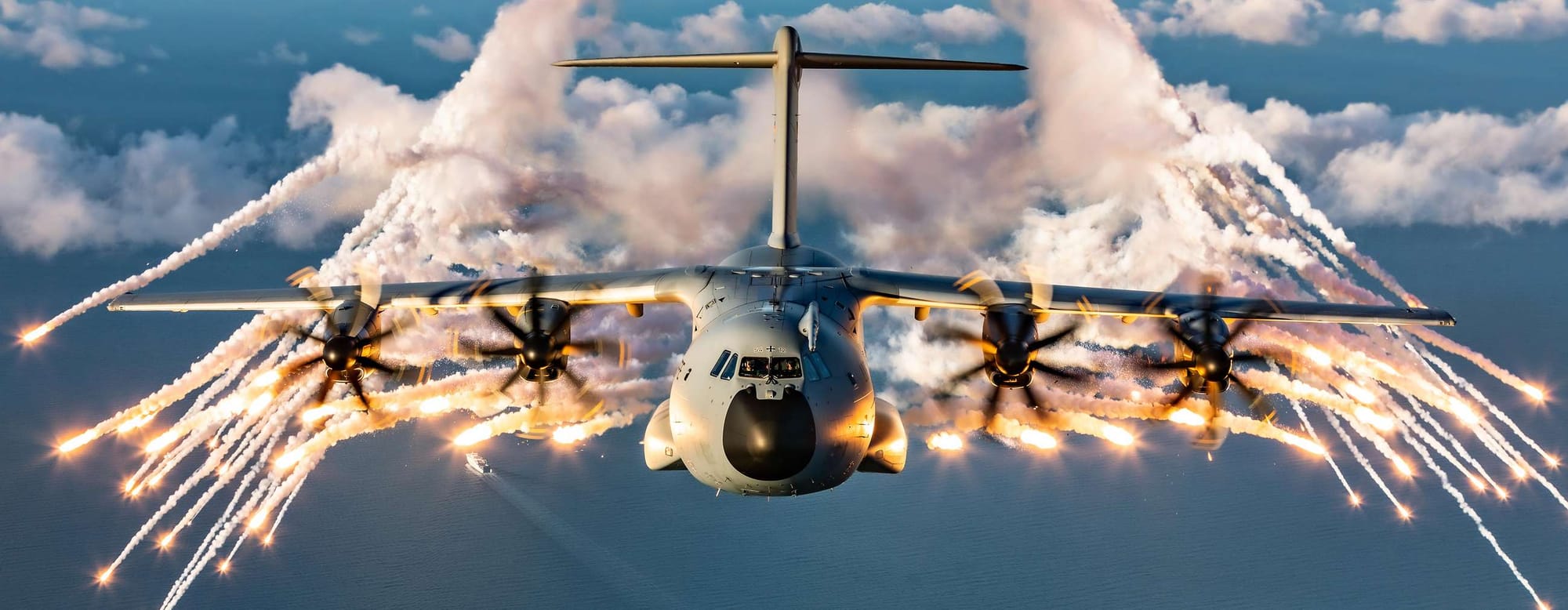
DIN | DEFENSE INDUSTRY
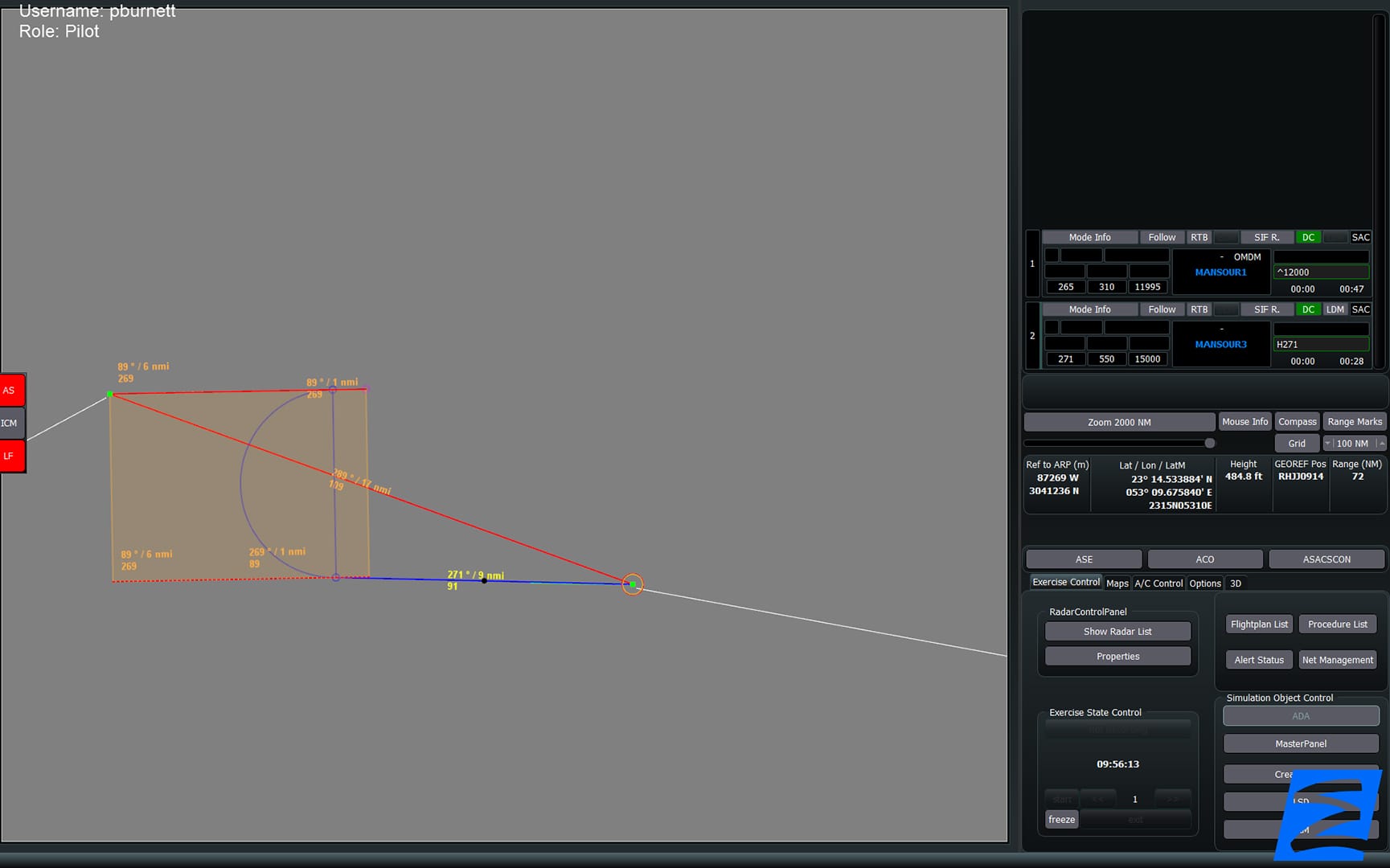
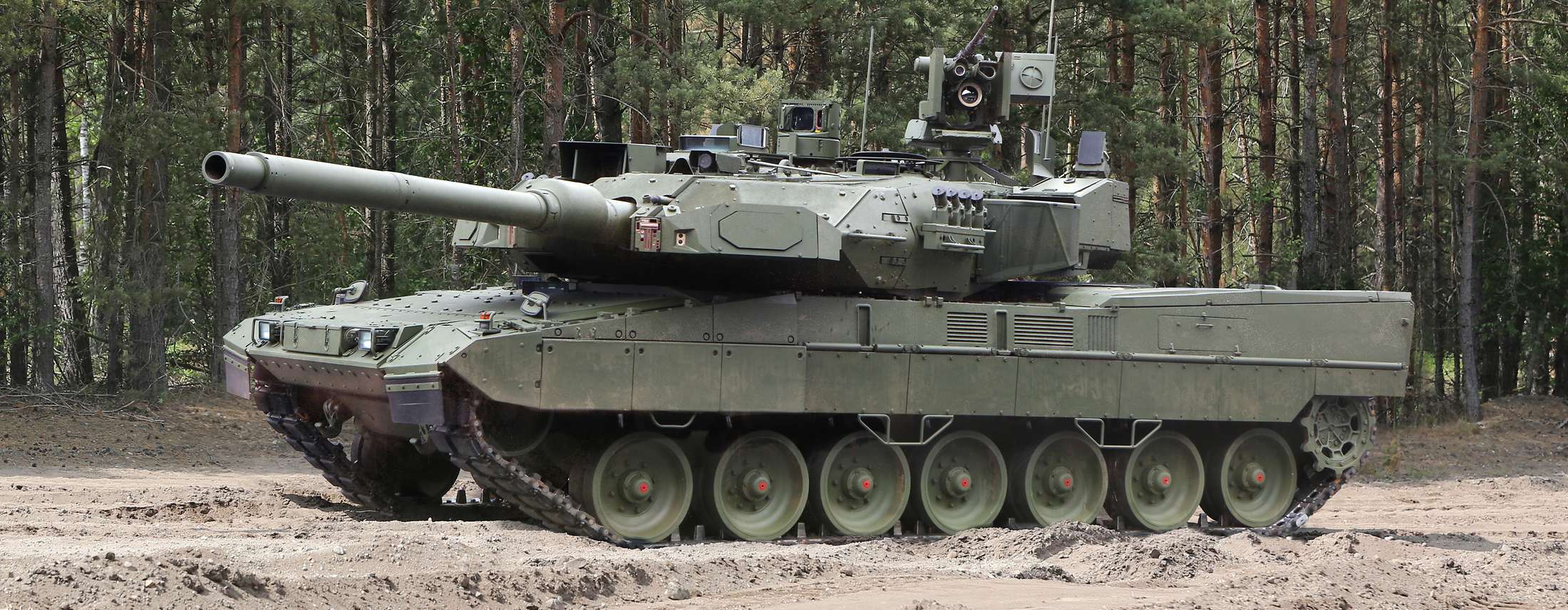
USR | DRONES

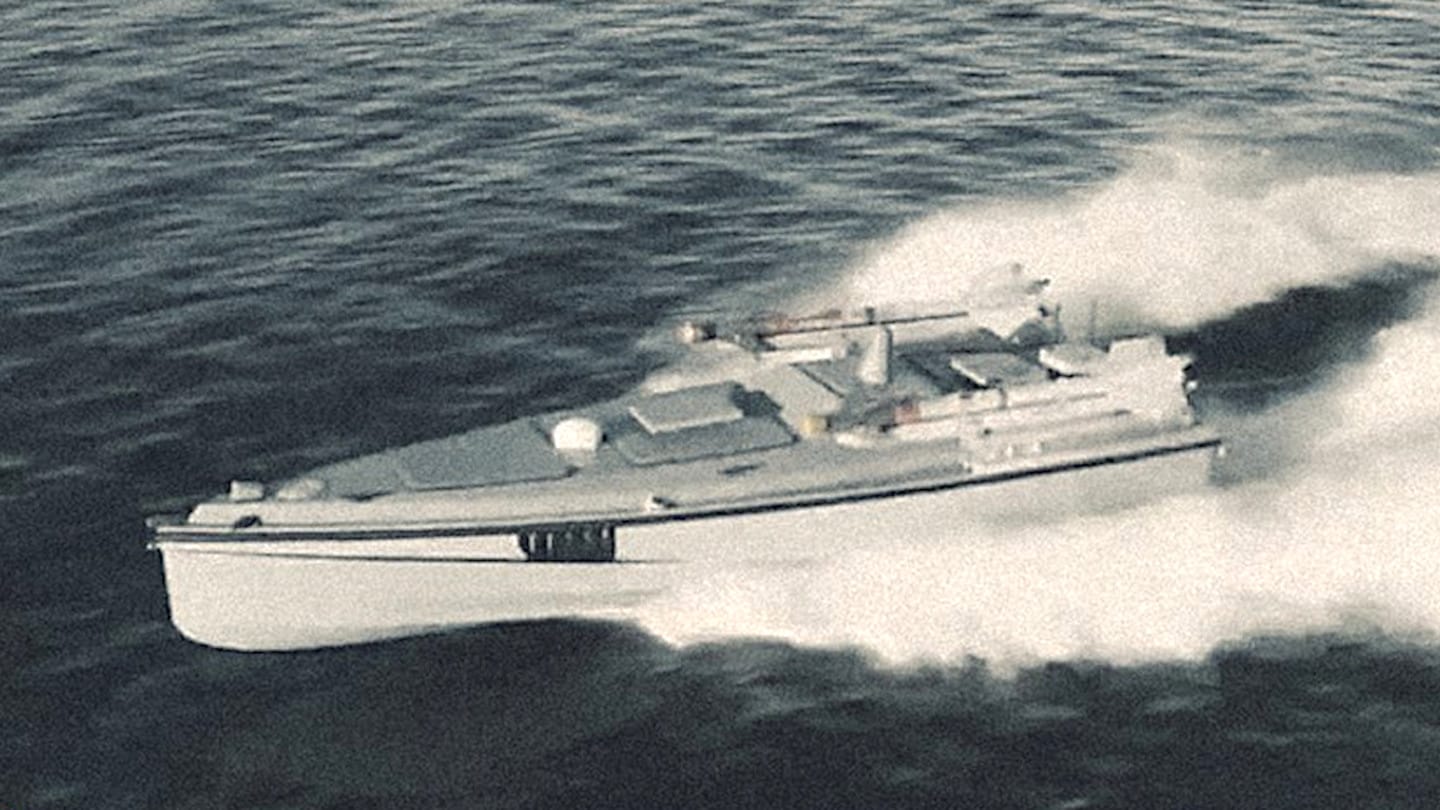
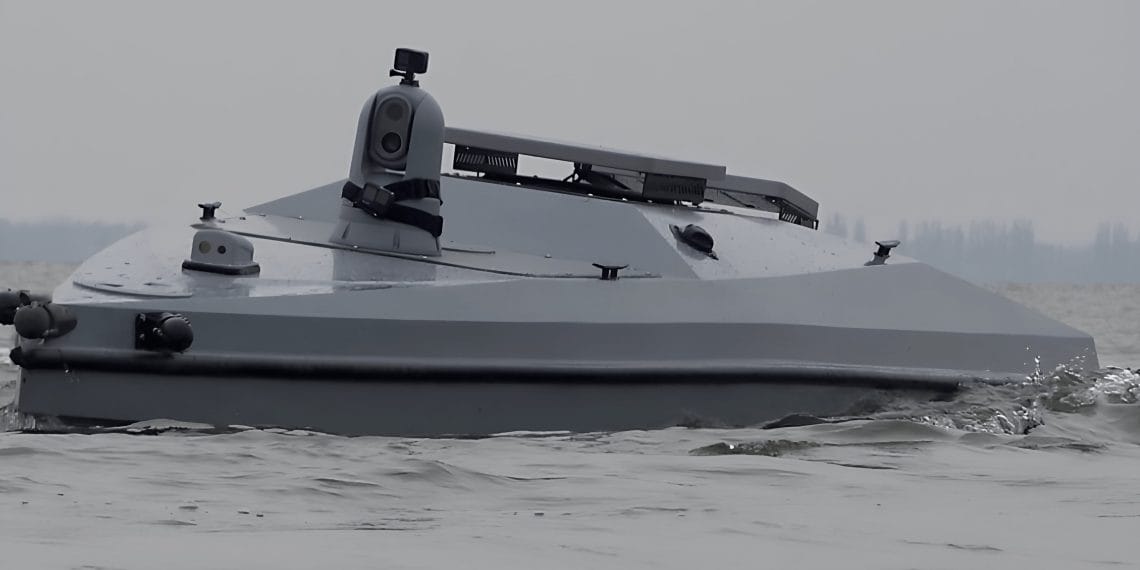
INT | NATO & EU
